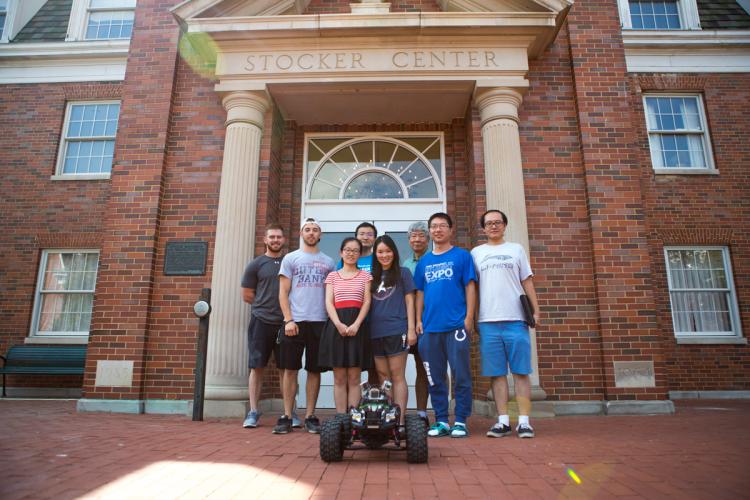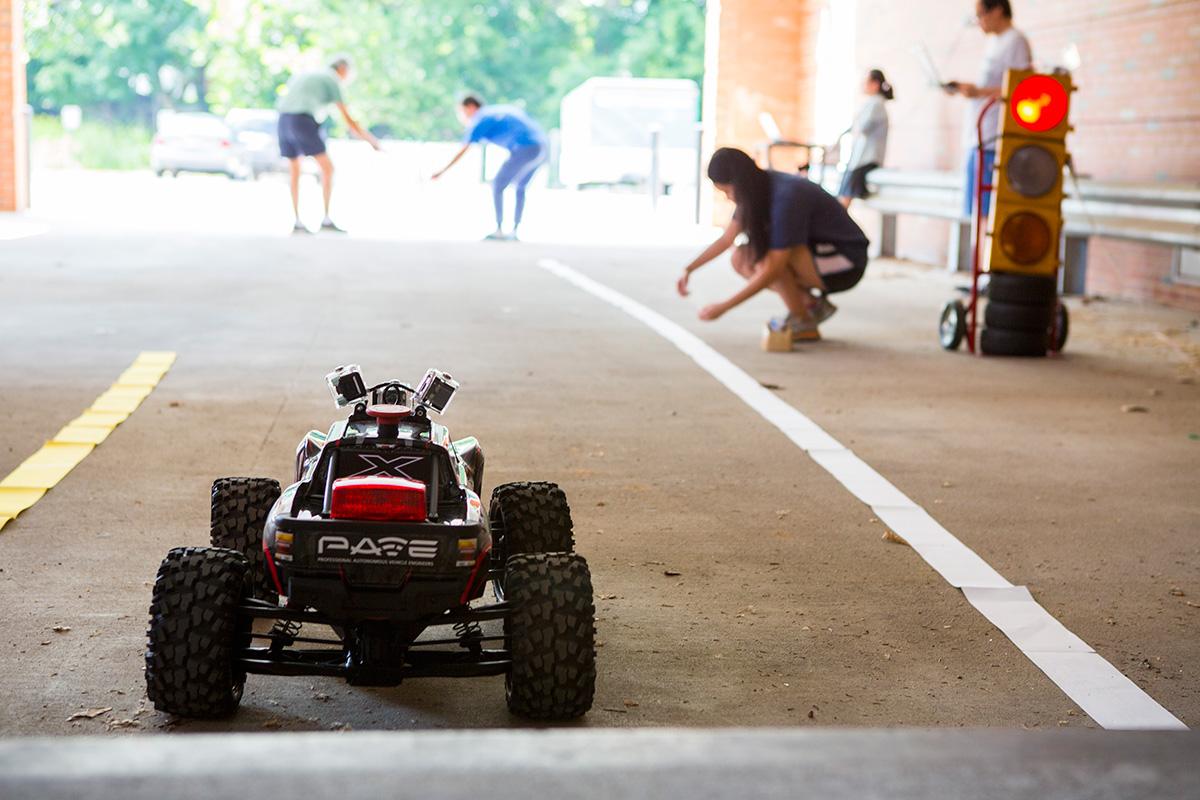
Engineers develop new technology to advance autonomous vehicles

The car travels gracefully in circles, navigating orange traffic cones and precisely parallel parking. But there is no driver behind the wheel of this toy-size vehicle, and no one is remotely controlling it.
The little car’s smooth moves demonstrate how a new technology developed by Ohio University Russ College of Engineering and Technology Professor Jim Zhu and his graduate students is working—and that the inventors are on the right path to full-scale car system development.
The autonomous vehicle guidance and trajectory tracking system developed by Zhu is patent pending. With funding from the state of Ohio’s Technology Validation and Start-Up Fund Program and matching support from Ohio University, an independent automotive engineering service firm is conducting further testing to help move the technology into the marketplace.
Since the project’s inception in 2015, Zhu and his co-inventors, graduate students Amy Chen and Letian Lin, have continued to refine the system, scaling it up to progressively larger vehicles. With the new student organization Professional Autonomous Vehicle Engineers (PAVE), the engineering team has entered various international autonomous robot and intelligent ground vehicle competitions, scoring high and gaining notice for their unique vehicles and technology.
The Ohio University system acts as a bridge between the vehicle’s artificial intelligence and its mechanical systems—the steering, throttle and brakes. Zhu and his graduate students are developing and integrating multiple components of the system, including sensors that detect motion and obstacles in the environment, as well as the control system that moves the car and determines its trajectory.
The technology has numerous advantages for practical use in the auto industry, Zhu said. It provides precise and agile maneuvering of the vehicle, yet it’s inexpensive, can be integrated with existing vehicle systems, and doesn’t require a lot of computing power.
“The benefit to the industry is that the system is readily applicable—and it’s a high performance, low-cost solution,” Zhu said.
As shown in the Ohio University experiments, the system also can be scaled up fast.
“You want this to be used on all cars without a lot of re-investment,” Zhu added.
Zhu is an expert on control systems and vehicle guidance, starting with his early work with NASA on the second generation space shuttle (known as the re-usable launch vehicle) and continuing with his research at the university’s Avionics Engineering Center, where he invented control systems that helped airplanes better navigate turns. In more recent years, Zhu has been investigating the control systems required to operate drones.
His dream design—which he received a U.S. patent for in 2015—is a vehicle that can transform from a car to an airplane to a boat. His current research isn’t unrelated to this goal, as the new technology is designed to work across multiple vehicle types.
Now that the autonomous vehicle guidance and trajectory tracking system has been validated in smaller cars, Zhu and his graduate students are testing the system in a full-size vehicle. Working with Roush Industries, Inc., in Detroit, the team is investigating how the technology works at 15 miles per hour in a parking lot, with the goal of moving to 45 miles per hour on a restricted test ground, and eventually to highway speeds with additional funding.
Zhu also is in the process of procuring a small electric car so that the team can continue regular product testing in Athens—and up their game for the international student competitions.
“There are not many universities, even in the United States, that have an autonomous vehicle,” Zhu noted.

